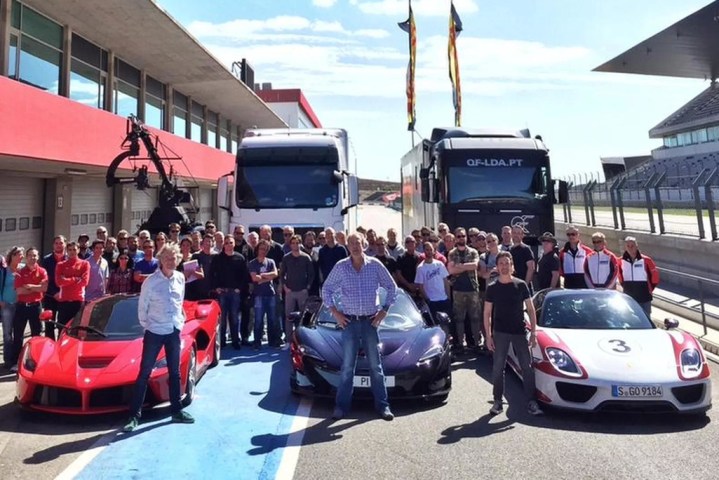
No, we’re not referring to former Top Gear hosts Jeremy Clarkson, Richard Hammond, and James May, although their reunion on Amazon Prime could be worthy of that title. What we’re really talking about is the trio of hybrid hypercars — the Ferrari LaFerrari, Porsche 918, and McLaren P1 — which were long rumored to go head-to-head on the famed BBC program. Words were said and fists were (allegedly) flung, leaving that iteration of Top Gear dead, but the monumental battle appears to be happening in a different arena.
On Oct. 7, Jeremy Clarkson posted a message on Twitter that said, “With a skeleton crew, filming for Amazon Prime’s new motoring programme has begun.” Attached to the tweet was a photo of him, Hammond, May standing in front of the three hypercars alongside a track, all but ensuring that the race will finally happen. The vehicles have been tested side by side before, but not by these oft-controversial figures, which makes the premiere of the Amazon Prime show a can’t-miss.
Clarkson wasn’t the only one to generate social media buzz on this topic. Hammond, his pint-sized co-host, also posted to Twitter, saying, “The band is back together and it feels brilliant.” May, aka Captain Slow, also chimed in.
Great first day at work. I can’t stop staring. pic.twitter.com/GtYVHaGmYR
— James May (@MrJamesMay) October 7, 2015
Notable car journalist Chris Harris — who has hosted automotive television programs in the past — was on site as well, although we’re not sure in what capacity. Either way, he contributed a few snapshots from the forthcoming episode, which should be enough to send yearning Top Gear fans into a proverbial frenzy.
The series, the name of which has not been publicly divulged, is expected to debut on Amazon Prime sometime late next year.



